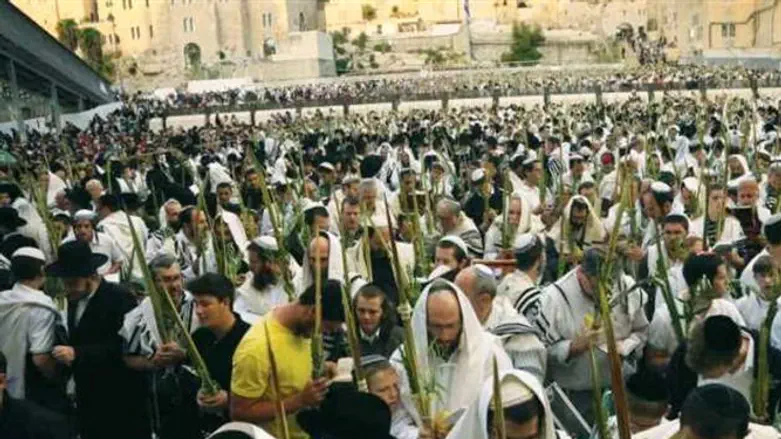
The Talmud in Sukkah 27b makes a remarkable claim regarding the holiday of Succoth:
“For seven days... all who belong to the people of Israel will live in sukkot [thatched huts]” (Lev. 23:42).
This teaches that it is fitting for all of Israel to sit in one sukkah.
Obviously, no sukkah is large enough to hold the entire Jewish people. What is the meaning of this utopian vision — all of Israel sitting together in a single sukkah?
The Unity of Succoth
As long as we are plagued by pettiness and other character flaws, we cannot attain true collective unity. But after experiencing the unique holiness of Yom Kippur, this unfortunate state is repaired. After our lives have been illuminated by the light of teshuvah and the entire Jewish nation has been purified from the negative influences of sin and moral weakness, the soul’s inner purity becomes our predominant quality. With this regained integrity, we merit an ever-increasing harmony among the diverse sectors of the nation.
During the holiday of Succoth we absorb the light of Torah and a love for truth. Conflicting views become integrated and unified. Through the spiritual ascent of the Days of Awe, we attain a comprehensive unity, a unity that extends its holy light over all parts of the Jewish people.
During this special time, it is as if the entire nation is sitting together, sharing the holy experience of the same sukkah.
According to the Hasidic master Rabbi Nathan (1780-1844, chief disciple and scribe of Rabbi Nachman of Breslov), this sense of unity is the very essence of the mitzvah of sukkah. He wrote in LikuteiHalachot that one should fulfill the mitzvah of sukkah with the following kavanah:
“One should concentrate on being part of the entire people of Israel, with intense love and peace, until it may be considered as if all of Israel dwells together in one sukkah.”
(Silver from the Land of Israel. Adapted from Mo'adei HaRe’iyah p. 96, sent by Rabbi Chanan Morrison, Ravkooktorah.org)
